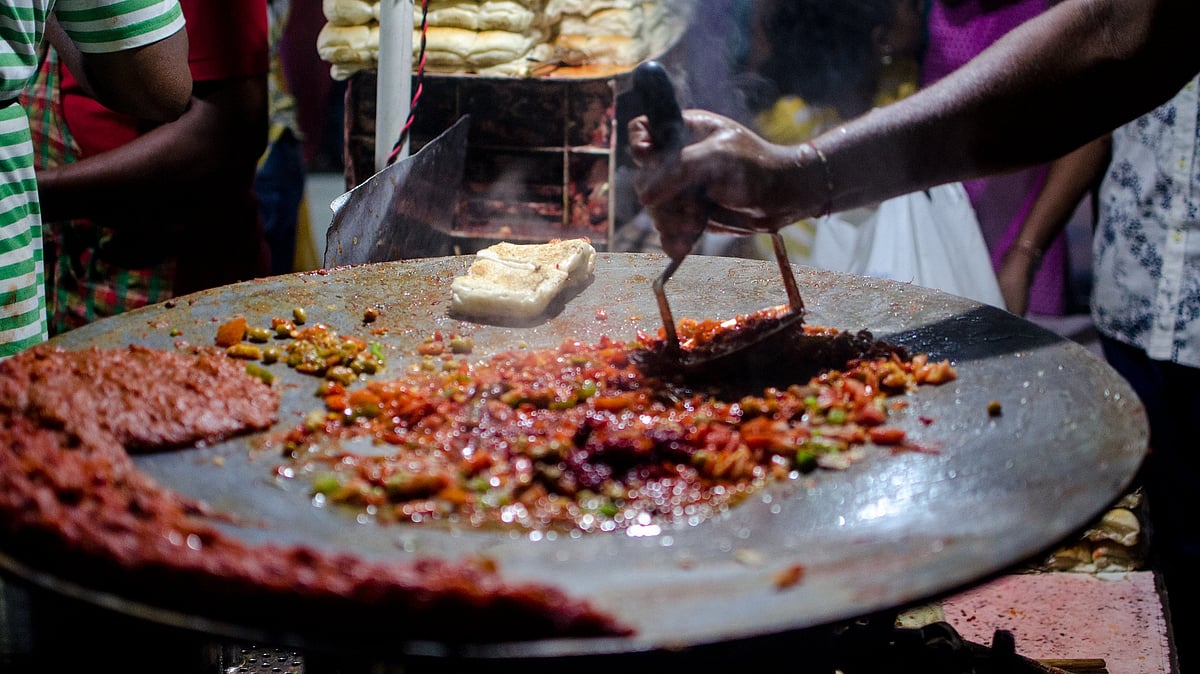When discussing Mumbai’s local food, Pav Bhaji is the first to come to mind. The city and Pav Bhaji have a lot in common. Food possesses the power to bring together diverse cultures and people. Mumbai’s local cuisine, Pav Bhaji, is one of those dishes. Pav Bhaji sets a perfect metaphor for Bombay.
Mumbai had become an industrial city with mill workers occupying the majority of the space back in the day. These mill workers came initially from all across Maharashtra and then India. Bombay before it became Mumbai was home to many colonists and visitors. The flavour of the city can be tasted in its diverse culture, each adding a unique element. A dollop of the rich creamy section makes the city look much more glamorous, attracting more tourists.
Archaeologist and culinary anthropologist, Dr Kurush F Dalal, says, “Pav Bhaji is something similar to Bombay. It’s got all kinds of different things coming together. Some are recycling things made in Gujarati houses. It’s about lovely evening snacks for people coming back from work. This is something very Bombay. Then there is pav which is very very Mumbai, Pune and Goa thing, a huge portuguese influence, and then there is butter; so Pav Bhaji is a metaphor for the city.”
The city is a cultural hub and when you explore its street food you understand how history has impacted its uniqueness.
Vikram Doctor, a veteran food journalist who also talks extensively about food on podcasts, says, “It was first popularised near the stock exchange as a snack bought by the stock brokers around Dalal Street near the Share Bazaar. Bombay has always been about money. Pav Bhaji as a snack became popular with Gujarati community stock brokers. That’s one thing like Mumbai.”
It was not just the brokers but the workers too who thrived eating pav-bhaji. Since mill workers had to work extra hours, they required something quick and filling. Pav Bhaji and Vada Pav were the two options that they often resorted to.
Roshni Bajaj Sanghvi, a food journalist and a third generation Mumbaikar says, “Pav Bhaji was eaten by the mill workers. People who worked in shifts.”
Initially Pav Bhajiwas like the city of Mumbai — cospmopolitian in nature. All easily available and affordable vegetables went into the bhaji. That made the meal wholesome for the people on the go.
The dish was soon off the streets and became popular dish in every Mumbai household. The housewives gave it their own twists. “Either simultaneously or independently, a lot of Gujarati households’ would put leftover vegetables with smashed potatoes and add chat masala with a little butter. This dish became an interesting dish coming up on the streets for people coming out of work to eat before going back home,” says Dalal.
He adds, “Pav Bhaji was sold side by side with Pulav. People would serve Pulav and Pav Bhaji on the same haath gaadi or cart. Nowadays, you don’t see Pulav and Pav Bhaji together.

Pav Bhaji is a mixture of many vegetables. Each vegetable comes from trade brought by the colonisers and visitors. Doctor says, “The bread is linked to the Portuguese and the British. The tomato came with the English in the 19th century. Also the dish is being commercialised. Bombay is also so much about buying and selling.”
From ancient times, Bombay was known to be the trade and transport hub. People from different walks of life would come together and make this city what it is today.
Pav Bhaji may have a peculiar red colour (sometimes due to added food colours) but consists of vegetables of all colours. The dish cannot be made without these vegetables.
The vegetables are pocket-friendly and form the largest part of the dish, but yet it is the rich butter that attracts the hungry Mumbaikars and the tourists. Without the butter it’s a humble dish usually consumed by the humbler population of the city.
The dish, just like its city, initially served the hunger pangs of the working class. The fast-paced city is similar to the dish in the sense that it was invented keeping in mind the busy schedules of the mill workers of Bombay.
